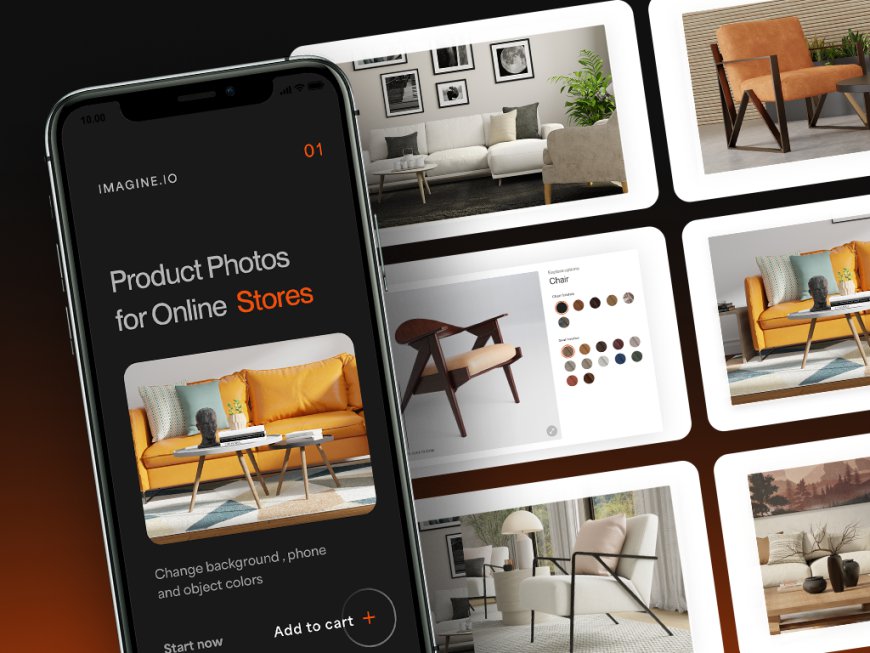The Role of 3D Technology in Modern Product Design
In today’s digital landscape, 3D technology plays a critical role in shaping the future of product design, customization, and marketing.

From eCommerce to industries like furniture, textiles, and commercial spaces, 3D technology is revolutionizing how products are conceptualized and experienced by consumers.
Revolutionizing Online Shopping with 3D Product Configurators
3D Product Configurators allow customers to personalize items in real-time, transforming the online shopping experience. With tools that let users adjust colors, materials, and dimensions, shoppers can visualize customizations instantly. This not only enhances satisfaction but also significantly reduces return rates. By offering real-time customization, brands foster deeper customer engagement and loyalty.
For an in-depth look at how Imagine.io enhances Visual eCommerce, explore this resource.
Elevating the Shopping Experience with Visual eCommerce
Visual eCommerce powered by 3D renderings offers a more immersive shopping experience, bridging the gap between online and physical stores. High-quality 3D visuals allow customers to view products from all angles, interact with them, and make confident purchasing decisions. This dynamic experience encourages greater customer confidence and helps online brands compete more effectively with traditional retail.
Innovating Accessory Design
The fashion industry is embracing 3D Accessories Design, enabling designers to create intricate models of items like jewelry, handbags, and more. This level of precision accelerates the prototyping phase, allowing for faster and more efficient production of new concepts. Designers can experiment more freely without the constraints of physical resources, bringing innovations to market swiftly.
Precision in Furniture Design with 3D Casegood Design
3D Casegood Design is transforming the way furniture like cabinets and storage solutions are conceptualized. Designers can now create precise models, ensuring that each piece fits seamlessly into its designated space. This level of accuracy reduces material waste and speeds up the production process, ultimately delivering a higher-quality product.
Commercial Spaces Designed with 3D Technology
For architects and interior designers, Commercial 3D Design is indispensable when planning commercial spaces. By leveraging 3D models, they can test different layouts, materials, and lighting conditions, ensuring that the final design meets the client’s expectations. This virtual testing phase eliminates costly errors and streamlines the design process.
Furniture Design Reimagined with 3D Technology
The furniture industry has been transformed by 3D Furniture Design, which allows for highly detailed, customizable models. Customers can now see how specific furniture pieces will look in their homes, making real-time adjustments to finishes, materials, and dimensions. This interactive experience helps shoppers make more informed purchasing decisions and enhances overall satisfaction.
Customizing Comfort with 3D Mattress Design
With 3D Mattress Design, customers can personalize their mattress, adjusting everything from firmness to materials, ensuring that the product meets their unique comfort needs. This customization capability also allows for real-time visualization, which builds customer confidence and satisfaction.
Outdoor Products Perfected with 3D Design
Designing outdoor products has never been more precise or efficient thanks to 3D Outdoor Product Design. Designers can simulate environmental conditions such as weather and durability, ensuring that the product performs well under real-world conditions. This process not only ensures durability but also enhances the visual appeal of outdoor items.
Innovating Textile Design with 3D Modeling
In the textile industry, 3D Textile Design empowers designers to experiment with patterns, textures, and fabrics in a virtual environment. This technology accelerates the design process, reduces the need for physical samples, and opens up new possibilities for creative exploration.
Enhancing Product Listings with 3D Photography
In the world of eCommerce, eCommerce Product Photography provides a cost-effective and highly consistent method of showcasing products online. These 3D images offer a lifelike representation of products, enabling customers to make more informed buying decisions while reducing the need for costly photoshoots.
Conclusion
The integration of 3D technology across various sectors such as eCommerce, furniture, accessories, and textiles demonstrates its unmatched versatility in modern product design. By enhancing customization, improving visualization, and accelerating production, 3D technology is proving to be a vital tool for businesses seeking to stay competitive in the digital age. As this technology evolves, its applications will continue to expand, driving greater efficiency and creativity across industries.
